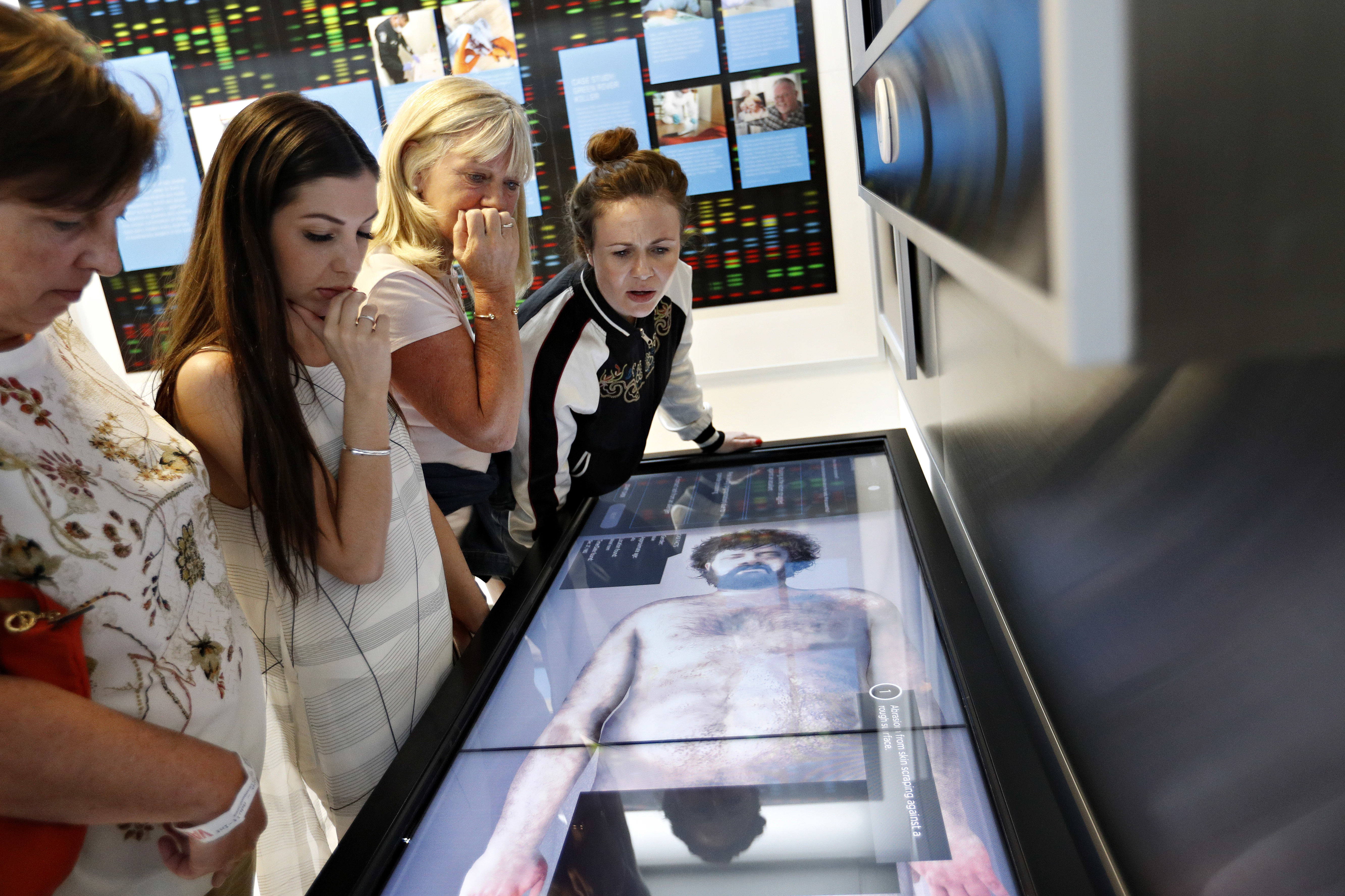
By REGINA GARCIA CANO
Associated Press
LAS VEGAS (AP) — A home invader wearing a ski mask is holding a woman hostage in her bedroom. A police officer immediately starts giving verbal commands, ordering the man to let the woman go, but the intruder refuses and lunges toward the officer with a weapon in hand. The officer then raises her gun and shoots the man. The officer in this training exercise was a British tourist, and the victim and intruder were on a life-size video projection inside the Mob Museum in Las Vegas.
The visitor was participating in a new hands-on exhibit that arms visitors with a pistol that shoots plastic pellets and puts them in simulated situations similar to those police encounter in real life. The courthouse-turned-museum in downtown Las Vegas for years has showcased the area’s storied past in organized crime. But visitors now can also learn about the complexity of the decisions that officers face when they encounter situations that may require the use of deadly force. The museum’s most recent renovation also has added an interactive crime lab and a speakeasy, complete with on-site distilled moonshine.
The use-of-force exhibit walks visitors through video and live role-playing scenarios, including an encounter in a staged alley with a suspicious person played by an actor or actress. Museumgoers are issued a police duty belt and a gun that’s as heavy as one police officers carry. Participants first receive a video introduction from a Las Vegas police captain and go through a brief target-shooting practice. All along, museum facilitators teach visitors gun safety practices, use-of-force guidelines and police procedures. Guests learn to maintain distance from a suspect, not to keep their finger on the trigger and not to shoot someone who does not pose an imminent threat.
“It did feel real. It was the first time I ever held a gun,” London resident Lesley Morris said after participating in the exhibit. “It was really informative. We don’t have guns or anything like that in England.” She added her heart rate went up as she walked through the exhibit.
In the case of the home invasion scenario, visitors see a video that shows the moment a resident tells an officer in a patrol car that someone has entered a house. Visitors at that point take on the role of officer and begin to see the inside of a home. “Police,” they are encouraged to yell to announce themselves. The video then shows the bedroom with the man holding the woman.
Panels outside the exhibit explain the use-of-force policies and de-escalation tactics used by the Las Vegas Metropolitan Police Department, as well as statistics on deaths resulting from police use of force nationwide. Las Vegas police Capt. Robert Plummer, who previously headed the department’s team that handled officer-involved shootings, told The Associated Press he hopes the exhibit will educate and change some people’s perspectives on what police face when it comes to using deadly force, especially in an era when shootings by police have become a high-profile issue around the country.
“A lot of people wonder ‘Why didn’t you shoot the gun out of his hand or shoot him in the ankle?'” Plummer said. “If you go through the exhibit, you’ll realize that’s nearly impossible to do and to do it on a precision-type basis because there are so many factors. You have to know your backdrop. So, if you miss shooting at the elbow, what’s behind? Is it an innocent citizen that’s standing back there or is it a child or is it someone else? At a nearby exhibit, visitors are immersed in a “CSI”-type environment where they can try to match bullets that were fired from the same firearm by comparing striations and learn about the intricacies of a fingerprint.
The sketch of a real crime scene from 2016 and items that would be collected at a scene are on display. People can play coroner, too. A horizontal screen displays renderings of cadavers, and visitors are prompted to answer a series of questions to try to determine the cause of death. The cases are based on the deaths of famous mobsters. And below it all, people interested in learning more about the Prohibition era or just looking to have fun, can visit a working speakeasy in the museum’s basement. The exhibit explains in detail how the mob built networks to make, move and sell booze after the nation’s breweries and distilleries were closed.
People can sip on a variety of current and Prohibition-era cocktails as they learn about how people consumed alcohol when it was illegal to do so. Museum ticketholders can access the speakeasy as part of their tour. Those interested in visiting only the transformed basement can gain access through a side entrance after finding daily secret codes on social media. After 5 p.m., the public may also enter The Underground for free directly through the side entrance. “People want experiences,” said Jonathan Ullman, museum president and CEO. “This allows us to take them back in time.”



















